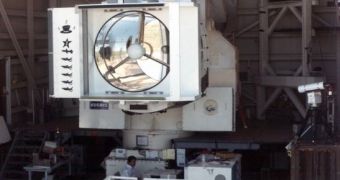Experts at the Northwestern University (NU) have recently managed to make a new breakthrough in the field of quantum cascade laser (QCL) research. They have demonstrated that a single device, a mid-infrared laser, is capable of an output power larger than 120 watts, all at room temperature. This has never been evidenced before, and the team says that its innovation could be used to create more advanced countermeasures for civilian and military airplanes in the near future.
These countermeasures refer to the decoys that are either being ejected or fired from an airplane which is being chased by a heat-seeking missile. The infrared lasers could easily confuse the mechanisms aboard the missile, and make it detonate at a safe distance from the plane. The NU team was led by the Walter P. Murphy Professor of Electrical Engineering and Computer Science Manijeh Razeghi. The expert is based at the university's McCormick School of Engineering and Applied Science. Details of the research appear in the December 1 issue of the respected scientific journal Applied Physics Letters.
Unlike common semiconductor lasers, such as the ones used in computer optical drives, the QCL are intersubband devices, which means that they only require electrons in order to operate. This essential difference allows them to exhibit a lot more efficiency than conventional lasers, especially when it comes to power scaling with broad-area devices. The QCL also has a linewidth enhancement factor of nearly 0, as opposed to 2-5 in usual lasers. The concept of linewidth refers to the width of the device's attainable optical spectrum.
The new achievement is very important when put into perspective. Just one year ago, the maximum power output of a QCL was of around 34 watts, which means that the current technology has advanced at a rate of nearly 300 percent in just 12 months. The new investigation was partially supported by the Defense Advanced Research Projects Agency's (DARPA) Efficient Mid-Infrared Laser (EMIL) program. Additional funding was provided by the US Office of Naval Research (ONR).

 14 DAY TRIAL //
14 DAY TRIAL //